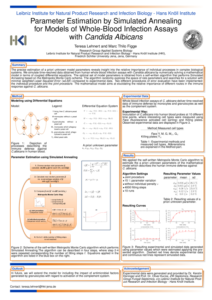In this study we investigate receptor–ligand binding in the context of antibody–antigen binding. We established a quantitative mapping between macroscopic binding rates of a deterministic differential equation model and their microscopic equivalents as obtained from simulating the spatiotemporal binding kinetics by a stochastic agent-based model. Furthermore, various properties of B cell-derived receptors like their dimensionality of motion, morphology, and binding valency are considered and their impact on receptor–ligand binding kinetics is investigated. The different morphologies of B cell-derived receptors include simple sperical representations as well as more realistic Y-shaped morphologies. These receptors move in different dimensionalities, i.e. either as membrane-anchored receptors or as soluble antibodies. The mapping of the macroscopic and microscopic binding rates allowed us to quantitatively compare different agent-based model variants for the different types of B cell-derived receptors. Our results indicate that the dimensionality of motion governs the binding kinetics and that this predominant impact is quantitatively compensated by the bivalency of these receptors.
Model for antigen binding by B cell-derived receptors
Publications
Aspergillus fumigatus-derived gliotoxin impacts innate immune cell activation through modulating lipid mediator production in macrophages
Günther K, Nischang V, Cseresnyés Z, Krüger T, Sheta D, Abboud Z, Heinekamp T, Werner M, Kniemeyer O, Beilhack A, Figge MT, Brakhage AA, Werz O#, Jordan PM#
Gliotoxin (GT), a secondary metabolite and virulence factor of the fungal pathogen Aspergillus fumigatus, suppresses innate immunity and supports the suppression of host immune responses. Recently, we revealed that GT blocks the formation of the chemotactic lipid mediator leukotriene (LT)B4 in activated human neutrophils and monocytes, and in rodents in vivo, by directly inhibiting LTA4 […]
Engineering Adhesion of the Probiotic Strain Escherichia coli Nissle to the Fungal Pathogen Candida albicans
Chamas A#, Svensson CM, Maneira C, Sporniak M, Figge MT, Lackner G
Engineering live biotherapeutic products against fungal pathogens such as Candida albicans has been suggested as a means to tackle the increasing threat of fungal infections and the development of resistance to classical antifungal treatments. One important challenge in the design of live therapeutics is to control their localization inside the human body. The specific binding […]
Metamizole outperforms meloxicam in sepsis: insights on analgesics, survival and immunomodulation in the peritoneal contamination and infection sepsis model
Liu N, Sonawane M, Sommerfeld O, Svensson CM, Figge MT, Bauer Reinhard , Bischoff SJ,Bauer M, Osuchowski MF, Press AT
Background: Limited availability and side effects of opioids have led to an increased use of non-opioid analgesia in animal disease models. However, by affecting the immune-inflammatory reactions, analgesia may disrupt the resolution of the host inflammation and modulate the survival in septic animals. This study used a clinically relevant sepsis mouse model of peritoneal contamination […]









